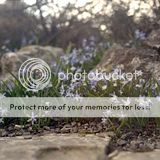- Messages
- 9,389
- Name
- Jon
- Edit My Images
- Yes
Just picked up my photos from film, last one I took in was about ten years ago. Just looking through them now and they look digital, the daffodils in the background look a luminous glowing yellow, the colours just look false as does the whole image!
I compared them to some photos that I took years ago, and the older pictures look lovely, and the colours and the whole image looks real and alive. While the new photos from film look artificial, the colours look false while the image just looks like a compuer scan.
It's obvious the new photos have been done digitally :|
I don't have a scanner, so I can't scan them to show!
I compared them to some photos that I took years ago, and the older pictures look lovely, and the colours and the whole image looks real and alive. While the new photos from film look artificial, the colours look false while the image just looks like a compuer scan.
It's obvious the new photos have been done digitally :|
I don't have a scanner, so I can't scan them to show!
Last edited:







